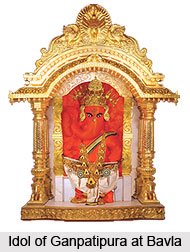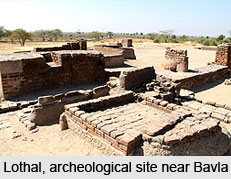 Bavla is a city as well as a municipality situated in the Ahmedabad District on the bank of the Sabarmati River in the central part of the state of Gujarat in western India. The administrative headquarters of the district are located in the city of Ahmedabad, in the northern part of the district. It is the most highly developed district in Gujarat.
Bavla is a city as well as a municipality situated in the Ahmedabad District on the bank of the Sabarmati River in the central part of the state of Gujarat in western India. The administrative headquarters of the district are located in the city of Ahmedabad, in the northern part of the district. It is the most highly developed district in Gujarat.
Demographics of Bavla
As per the 2001 India census, the city of Bavla has a population of 30,851. Males comprise 53% of the population and females make up 47%. Bavla has an average literacy rate of 70%, higher than the nationwide standard of 59.5%. 58% of the males and 42% of the females are literate. 13% of the population comprises children less than 6 years of age.
Economy of Bavla
Bavla`s economy has its roots in the rice business. There are approximately 135 rice mills, many cotton processing factories and a large grain market. Today, Bavla is also known as a business city, and is home to a number of pharmaceutical companies.
Education in Bavla
Bavla has several schools under the Bavla Education Society like A.K Vidhyamandir School, K.D.Balmandir, M.C Amin girls` School, S.M Patel Primary School, C.M.amin English Medium School etc. Among these schools, A.K. Vidyamandir is the hub of education in the town. The opening ceremony of the school was attended by Kiran Kanthadiya. Deepak Malto and Jawaharlal Nehru stayed in this school for two days during freedom struggle. Bavla town doesn"t have any college in it. Students from Bavla and nearby villages go to Ahmedabad for college education.
 Tourism at Bavla
Tourism at Bavla
The area around Bavla has a number of sites of tourist interest, including the Jain temple of Savstirth Nagar, temple of Lord Ganesha named as `Ganpatipura` and a number of Swaminarayan temples. The Ancient village of Harappan civilization, named as `Lothal` is also located nearby. Ahmedabad, Kheda, Gandhinagar, Anand, Surendranagar are also some of the nearby tourist destinations to see.
Visiting Information to Bavla
Bavla Station is the nearest railway station to Bavla Taluka. However, Ahmedabad Junction Rail Station is the major station, which is located at a distance of 36 km from Bavla. Sardar Vallabhbhai Patel International Airport is the nearest to reach Bavla. National Highway 19 connects Bavla to other parts of Gujarat.



















